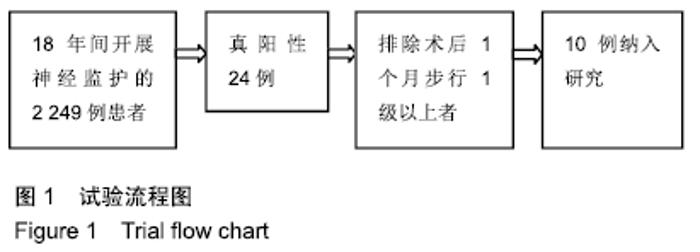[1] GUNNARSSON T, KRASSIOUKOV AV, SARJEANT R, et al. Real-time continuous intraoperative electromyographic and somatosensory evoked potential recordings in spinal surgery: correlation of clinical and electrophysiologic findings in a prospective, consecutive series of 213 cases. Spine (Phila Pa 1976).2004;29:677-684.
[2] NUWER MR, EMERSON RG, GALLOWAY G, et al.American Association of Neuromuscular and Electrodiagnostic Medicine. Evidence based guideline update: intraoperative spinal monitoring with somatosensory and transcranial electrical motor evoked potentials.J Clin Neurophysiol. 2012;29:101-108.
[3] AJIBOYE RM, D’ORO A, ASHANA AO, et al.Routine use of intraoperative neuromonitoring during ACDFs for the treatment of spondylotic myelopathy and radiculopathy is questionable: a review of 15,395 cases. Spine (Phila Pa 1976).2017; 42:14-19.
[4] NEY JP, VAN DER GOES DN, NUWER MR.Does intraoperative neurophysiologic monitoring matter in noncomplex spine surgeries? Neurology.2015;85:2151-2158.
[5] HAMILTON DK, SMITH JS, SANSUR CA, et al.Rates of new neurological deficit associated with spine surgery based on 108,419 procedures: a report of the scoliosis research society morbidity and mortality committee.Spine.2011; 36:1218-1228.
[6] Matsumoto M, Toyama Y, Chikuda H, et al.Outcomes of fusion surgery for ossification of the posterior longitudinal ligament of the thoracic spine: a multicenter retrospective survey.J Neurosurg Spine.2011;15:380-385
[7] MACDONALD DB, SKINNER S, SHILS J, et al.American Society of Neurophysiological Monitoring. Intraoperative motor evoked potential monitoring - a position statement by the American Society of Neurophysiological Monitoring. Clin Neurophysiol.2013; 124:2291-2316 .
[8] IMAGAMA S, ANDO K, ITO Z, et al.Risk factors for ineffectiveness of posterior decompression and dekyphotic corrective fusion with instrumentation for beaktype thoracic ossification of the posterior longitudinal ligament: a single institute study. Neurosurgery.2017; 80:800-808.
[9] STECKER M.A review of intraoperative monitoring for spinal surgery.Surg Neurol Int. 2012;3:174.
[10] PARK P, WANG AC, SANGALA JR, et al.Impact of multimodal intraoperative monitoring during correction of symptomatic cervical or cervicothoracic kyphosis.J Neurosurg Spine. 2011;14: 99-105.
[11] RAYNOR BL, BRIGHT JD, LENKE LG, et al. Significant change or loss of intraoperative monitoring data: A 25-year experience in 12,375 spinal surgeries.Spine (Phila Pa 1976).2013;38:113-117.
[12] Nuwer MR.Intraoperative monitoring of the spinal cord. Clin Neurophysiol.2008;119:247-249.
[13] PELOSI L, LAMB J, GREVITT M, et al.Combined monitoring of motor and somatosensory evoked potentials in orthopaedic spinal surgery.Clin Neurophysiol.2002;113:1082-1091.
[14] YOSHIDA G, ANDO M, IMAGAMA S,et al.Alert Timing and Corresponding Intervention with Intraoperative Spinal Cord Monitoring for High Risk Spinal Surgery.Spine (Phila Pa 1976). 2019;44(8):E470-E479.
[15] VITALE MG, SKAGGS DL, PACE GI, et al. Best practices in intraoperative neuromonitoring in spine deformity surgery: Development of an intraoperative checklist to optimize response. Spine Deform. 2014;2:333-339.
[16] TANG CYK, CHEUNG JPY, SAMARTZIS D, et al.Predictive factors for neurological deterioration after surgical decompression for thoracic ossified yellow ligament.Eur Spine J. 2017;26: 2598-2605.
[17] DANIEL JW, BOTELHO RV, MILANO JB,et al.Intraoperative Neurophysiological Monitoring in Spine Surgery: A Systematic Review and Meta-Analysis.Spine.2018;43:1154-1160.
|



